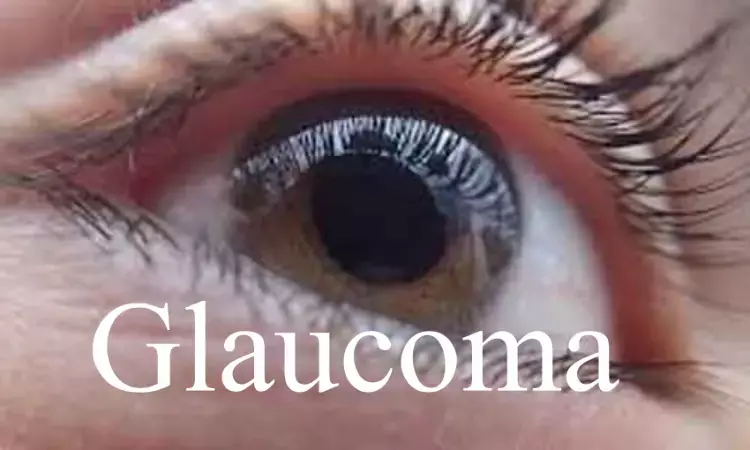- Home
- Medical news & Guidelines
- Anesthesiology
- Cardiology and CTVS
- Critical Care
- Dentistry
- Dermatology
- Diabetes and Endocrinology
- ENT
- Gastroenterology
- Medicine
- Nephrology
- Neurology
- Obstretics-Gynaecology
- Oncology
- Ophthalmology
- Orthopaedics
- Pediatrics-Neonatology
- Psychiatry
- Pulmonology
- Radiology
- Surgery
- Urology
- Laboratory Medicine
- Diet
- Nursing
- Paramedical
- Physiotherapy
- Health news
- Fact Check
- Bone Health Fact Check
- Brain Health Fact Check
- Cancer Related Fact Check
- Child Care Fact Check
- Dental and oral health fact check
- Diabetes and metabolic health fact check
- Diet and Nutrition Fact Check
- Eye and ENT Care Fact Check
- Fitness fact check
- Gut health fact check
- Heart health fact check
- Kidney health fact check
- Medical education fact check
- Men's health fact check
- Respiratory fact check
- Skin and hair care fact check
- Vaccine and Immunization fact check
- Women's health fact check
- AYUSH
- State News
- Andaman and Nicobar Islands
- Andhra Pradesh
- Arunachal Pradesh
- Assam
- Bihar
- Chandigarh
- Chattisgarh
- Dadra and Nagar Haveli
- Daman and Diu
- Delhi
- Goa
- Gujarat
- Haryana
- Himachal Pradesh
- Jammu & Kashmir
- Jharkhand
- Karnataka
- Kerala
- Ladakh
- Lakshadweep
- Madhya Pradesh
- Maharashtra
- Manipur
- Meghalaya
- Mizoram
- Nagaland
- Odisha
- Puducherry
- Punjab
- Rajasthan
- Sikkim
- Tamil Nadu
- Telangana
- Tripura
- Uttar Pradesh
- Uttrakhand
- West Bengal
- Medical Education
- Industry
Netarsudil an effective adjunctive glaucoma therapy: Study

Netarsudil ophthalmic solution 0.02%, a Rho-associated protein kinase and norepinephrine transporter inhibitor, is a novel class of topical ocular hypotensive medical therapy. It lowers intraocular pressure (IOP) by simultaneously decreasing trabecular meshwork resistance, aqueous humor formation, and episcleral venous pressure, which makes netarsudil a good adjunctive IOP-lowering agent when used with other single-mechanism medications.
When used as monotherapy, netarsudil’s average IOP lowering effect was 5.2–6.6 mmHg. The efficacy of netarsudil as adjunctive therapy, however, has only been recently explored in the literature.
In this study, Sandy Samuel and team characterized netarsudil’s IOP-lowering effect when used as a second, third, fourth, fifth, and sixth agent and characterized the response duration in a survival analysis. They also uniquely identified patient cohorts with a pronounced and sustained response to netarsudil, who were designated as “Robust long-term responders” (>20% IOP reduction for at least 80% of visits) and “Super responders” (>20% and >10 mmHg IOP reduction). Finally, they explored the characteristics associated with a favorable IOP lowering response as well as reasons for netarsudil’s discontinuation.
This was a single-center, multiprovider retrospective cohort study set at Massachusetts Eye and Ear. Patients with a diagnosis of glaucoma or ocular hypertension on netarsudil and at least one other hypotensive agent for glaucoma who had at least one month of follow-up were included. Patients with additional procedures or glaucoma medication changes were excluded. The main outcome measures were IOP reduction, Kaplan–Meier survival analyses, netarsudil responder type, and complication rates.
236 eyes of 236 patients were included. The mean baseline IOP was 19.06 ± 4.6 mmHg on an average of 4 ocular hypotensive medications. 196 (83.1%) patients experienced IOP reduction at the first follow-up visit of 2.84 ± 0.30 mmHg at 55.66 ± 51.89 days. IOP reduction at the second visit among these patients was 3.01 ± 0.44 mmHg at 133.24 ± 77.63 days. After starting netarsudil, 59% had a sustained response (median duration of 315 days), 25% had a robust response (>20% IOP reduction for at least 80% of visits), and 10% had a super response (>20% and >10 mmHg IOP reduction). Netarsudil was effective as an adjunctive therapy across all baseline IOP categories with greater relative IOP reduction in higher baseline IOP groups.
In this retrospective cohort study, authors reported netarsudil’s IOP-lowering efect as an adjunctive agent. The study found an IOP-lowering effect when prescribed as adjunctive therapy with an average reduction from baseline of 2.84 ± 0.30 mmHg (14.34% ± 22.19%) at the first follow-up visit and 3.01 ± 0.44 mmHg (14.94% ± 28.04%) at the second follow-up visit.
“Our results support the use of netarsudil as an adjunctive treatment that can provide significant and sustained IOP lowering with once-daily dosing for patients across a broad baseline IOP range and number of baseline medications. Future studies should aim to create more explicit terminology that considers criteria related to netarsudil response over a longer follow-up period as well as further assesses specific demographic and clinical factors predictive of these robust responses.”
Source: Sandy Samuel, Hani El Helwe, Cameron E. Neeson; Hindawi Journal of Ophthalmology Volume 2022, Article ID 6925027, 15 pages https://doi.org/10.1155/2022/6925027
Dr Ishan Kataria has done his MBBS from Medical College Bijapur and MS in Ophthalmology from Dr Vasant Rao Pawar Medical College, Nasik. Post completing MD, he pursuid Anterior Segment Fellowship from Sankara Eye Hospital and worked as a competent phaco and anterior segment consultant surgeon in a trust hospital in Bathinda for 2 years.He is currently pursuing Fellowship in Vitreo-Retina at Dr Sohan Singh Eye hospital Amritsar and is actively involved in various research activities under the guidance of the faculty.
Dr Kamal Kant Kohli-MBBS, DTCD- a chest specialist with more than 30 years of practice and a flair for writing clinical articles, Dr Kamal Kant Kohli joined Medical Dialogues as a Chief Editor of Medical News. Besides writing articles, as an editor, he proofreads and verifies all the medical content published on Medical Dialogues including those coming from journals, studies,medical conferences,guidelines etc. Email: drkohli@medicaldialogues.in. Contact no. 011-43720751


